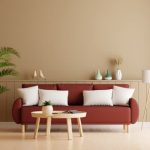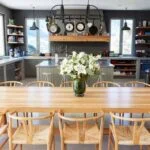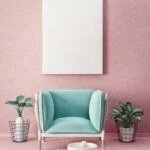Are you longing to bring some nostalgic 1970’s charm into your home decor? Learn how to decorate a 1970’s home and infuse it with the groovy vibes of a bygone era. From the color palette to the furniture and accessories, there are many ways to embrace this retro aesthetic and create a stylish living space that feels both trendy and timeless.
The 1970’s was an iconic decade for interior design, marked by bold colors, funky patterns, and a mix of sleek modernism and earthy, bohemian influences. This period was known for its love of bold and unconventional style choices that can still be seen as influential today. By exploring the interior design trends of this era, you can gain insight into how to incorporate these elements into your own home decor.
One key element of decorating a 1970’s home is understanding the color palette that defined this era. From avocado green and harvest gold to burnt orange and chocolate brown, the 1970’s were all about embracing rich, earthy tones alongside bright pops of color. Understanding how to use these hues in your decor will help you achieve an authentic 1970’s look while also allowing for some creative flexibility in your design choices.
The Color Palette of the 1970’s
Earthy Tones and Bold Hues
One of the defining features of 1970’s interior design is the use of earthy tones and bold hues. Colors like avocado green, harvest gold, burnt orange, and rust brown were popular choices for walls, furniture, and decor.
These warm and earthy tones were often paired with bold hues such as vibrant blues, purples, and yellows to create a striking contrast in the home. When decorating a 1970’s home, consider incorporating these iconic colors into your color palette to capture the essence of the era.
Retro Patterns
In addition to a distinct color palette, the 1970’s also embraced retro patterns such as geometric shapes, psychedelic prints, and bold floral designs. These patterns were commonly used in wallpaper, upholstery fabrics, and accent pieces. To bring the 1970’s vibe into your home, consider incorporating these retro patterns into your decor. Whether it’s through throw pillows, draperies or area rugs, adding these patterns can instantly transport you back to the groovy era.
Mixing Neutrals With Pops of Color
While bold hues and retro patterns played a significant role in 1970’s interior design, neutrals also had their place. Neutral tones such as beige, tan, and off-white were often used as a backdrop to showcase the vibrant colors and patterns prevalent in this decade.
When decorating a 1970’s home, it’s essential to strike a balance between neutrals and pops of color to achieve an authentic look. Consider using neutral-colored furniture or walls as a canvas for showcasing pops of color through accessories and accent pieces.
By embracing the iconic color palette of the 1970’s in your home decor scheme – from earthy tones to retro patterns – you can bring this nostalgic era to life while putting your own modern twist on it.
Incorporating Vintage Furniture and Decor
The 1970’s was a decade known for its bold and eclectic interior design trends. To recreate the look and feel of this era, it is essential to incorporate vintage furniture and decor that embody the style of the period.
Mid-Century Modern Furniture
One of the defining features of 1970’s interior design is the popularity of mid-century modern furniture. Look for sleek, clean-lined pieces made from materials such as teak, rosewood, and chrome. From Eames lounge chairs to Saarinen tulip tables, adding these iconic vintage pieces to your home can instantly capture the essence of the era.
Bohemian Accents
Incorporating bohemian elements into your home decor is another key aspect of 1970’s design. Look for macramé wall hangings, rattan furniture, and colorful textiles such as shag rugs and patterned throw pillows. These pieces can bring a relaxed and laid-back vibe to your living space, which was characteristic of the 70’s bohemian style.
Vintage Lighting and Accessories
To complete the look, consider adding vintage lighting fixtures such as pendant lamps with geometric shapes or floor lamps with globe shades. Also, seek out retro accessories like lava lamps, vinyl record players, and psychedelic artwork to add a playful touch to your home decor.
When incorporating vintage furniture and decor from the 1970’s into your home, be sure to mix and match different elements to create a unique and personal aesthetic that pays homage to this iconic era in design history.
1970’s Inspired Wall Art and Accessories
When it comes to decorating a 1970’s home, incorporating wall art and accessories is key in creating the perfect vintage vibe. The 1970’s was a time of bold and colorful decor, so it’s important to choose pieces that embody this aesthetic. Here are some ideas for adding 1970’s inspired wall art and accessories to your home:
- Macramé wall hangings: Macramé was a popular form of art in the 1970’s and is making a comeback in modern interior design. Add a macramé wall hanging to your living room or bedroom for a funky, retro touch.
- Statement mirrors: Large, round mirrors were a staple in 1970’s interior design. Look for vintage or vintage-inspired mirrors with gold or brass frames to add a touch of glamour to your space.
- Groovy posters and prints: Embrace the colorful, psychedelic style of the 70s with posters and prints featuring bold patterns, geometric shapes, and vibrant colors.
In addition to wall art, consider adding accessories that capture the spirit of the era. Vintage lamps, ceramic vases, and shaggy rugs are just a few examples of items that can help bring a sense of nostalgia to your home.
When selecting wall art and accessories for your 1970’s inspired decor, don’t be afraid to mix and match different styles and colors. The key is to have fun with it and let your personality shine through in your choices.
By incorporating these elements into your home, you can create a stylish and authentic 1970’s vibe that feels both nostalgic and fresh at the same time.
How to Integrate Modern Elements Into a 1970’s Home
The 1970s was a decade known for its bold and eclectic interior design. To integrate modern elements into a 1970’s home while still maintaining its unique vibe, consider mixing contemporary furniture and decor with vintage pieces. Balance is key when creating a harmonious blend of old and new.
One way to achieve this is by incorporating sleek, modern furniture into the space. Look for pieces with clean lines and minimalist designs to contrast the bold patterns and textures often found in 1970s interior design. This can include contemporary sofas, chairs, and tables that complement the existing aesthetic of the home.
Another approach to integrating modern elements into a 1970s home is through updated technology and amenities. Consider incorporating smart home features like automated lighting or a state-of-the-art sound system while keeping the retro charm intact. These modern touches can enhance convenience and comfort without compromising the vintage appeal of the space.
Additionally, artwork and accessories can be used as subtle nods to modernity within a 1970s home. Choose contemporary wall art or decor pieces that complement the existing color scheme and overall design theme while adding a touch of freshness to the space.
| Modern Element | Integration Method |
|---|---|
| Sleek Furniture | Blend contemporary sofas, chairs, and tables with vintage pieces. |
| Updated Technology | Incorporate smart home features like automated lighting or sound systems. |
| Artwork & Accessories | Select contemporary pieces that complement the existing design theme. |
Creating a Cozy and Inviting Living Space
The 1970s were a time of bold and vibrant interior design, with a focus on creating cozy and inviting living spaces. One of the key elements of this aesthetic is the use of warm and earthy tones such as mustard yellow, avocado green, and burnt orange. To create a cozy living space reminiscent of the 1970s, consider incorporating these colors into your decor through pillows, throw blankets, and area rugs.
In addition to color, texture also played a significant role in 1970s interior design. Think shag carpeting, macrame wall hangings, and plush upholstery. To bring this tactile element into your living space, consider adding a shaggy rug or macrame wall art to create visual interest and warmth.
Another essential aspect of creating a cozy living space in a 1970s home is the use of natural materials such as wood and rattan. Furniture made from these materials was popular during this era and can help to add warmth and character to your living room. Look for vintage pieces such as rattan armchairs or wooden coffee tables to bring an authentic 1970s vibe to your space.
| 1970’s Design Element | Description |
|---|---|
| Color Palette | Warm and earthy tones like mustard yellow, avocado green, burnt orange |
| Texture | Shag carpeting, macrame wall hangings |
| Natural Materials | Wooden furniture pieces, rattan accents |
Updating the Kitchen and Dining Areas in a 1970’s Home
When updating the kitchen and dining areas in a 1970’s home, it is important to consider the design trends of that era. The 70’s saw a shift from the sleek, modern designs of the previous decades to a more earthy, eclectic style. To bring this aesthetic into your kitchen and dining spaces, consider the following:
- Incorporate vintage appliances: Look for retro-inspired refrigerators, stoves, and other appliances that have a unique 1970’s flair.
- Embrace earthy tones: Use warm, earthy colors like avocado green, mustard yellow, and burnt orange for your kitchen cabinets and dining furniture.
- Add funky accessories: Look for vintage tableware, glassware, and serving dishes with bold patterns and psychedelic designs to create an authentic 1970’s vibe.
In addition to embracing vintage elements, it is also possible to incorporate modern touches into your kitchen and dining areas. Consider mixing retro pieces with contemporary elements such as sleek countertops or metallic accents to achieve a balanced look that is both nostalgic and current. By blending old and new elements, you can create a space that feels fresh and inviting while still paying homage to the iconic style of the 1970s.
Tips for Choosing the Right Flooring and Lighting for a 1970’s Aesthetic
When it comes to creating a 1970’s aesthetic in your home, the choice of flooring and lighting can make a significant impact on the overall look and feel of the space. One popular flooring option from the 1970’s era is shag carpeting, which gives off a cozy and retro vibe.
While shag carpeting may not be everyone’s cup of tea, you can achieve a similar effect with modern alternatives such as textured rugs or carpets in earthy tones like mustard yellow, olive green, or burnt orange. Additionally, you can opt for laminate or vinyl flooring with wood-like finishes to capture the essence of 1970’s interior design.
Lighting also plays a crucial role in achieving a 1970’s aesthetic in your home. During this era, statement lighting fixtures were all the rage. Look for pendant lights with geometric shapes, mod-inspired floor lamps, and funky chandeliers to bring that vintage charm into your living spaces.
Don’t be afraid to mix and match different lighting styles to create visual interest and add personality to each room. In addition to these statement pieces, consider incorporating dimmer switches to control the ambiance and create a warm, inviting atmosphere reminiscent of the 1970’s.
To complement the flooring and lighting choices for a 1970’s aesthetic, it’s essential to pay attention to the color palette as well. Earthy tones like avocado green, harvest gold, and rusty brown were prevalent during this time period and can be incorporated into your decor through area rugs, curtains, or light fixtures.
By carefully selecting flooring materials, lighting fixtures, and color schemes that reflect the iconic style of the 1970’s, you can effortlessly infuse your home with a nostalgic yet trendy vibe that pays homage to this groovy decade.
Bringing the 1970’s Vibe Into the Bedroom and Bathroom Spaces
When it comes to bringing the 1970’s vibe into the bedroom and bathroom spaces, there are several key elements to consider. In the 1970s, earthy and warm colors were prominent, so when decorating these spaces, it’s important to keep this palette in mind.
For the bedroom, consider incorporating a statement piece of vintage furniture such as a wooden headboard or a dresser with clean lines and geometric shapes. Additionally, using cozy textures such as shag rugs or macramé wall hangings can add to the retro feel.
In the bathroom, incorporating elements like bold patterned wallpaper or tiles can instantly transport the space back in time. Look for vintage-inspired vanities or light fixtures to enhance the 1970’s aesthetic. Bathrooms in this era often featured bright colors and patterns, so don’t be afraid to experiment with these elements in your own decor.
To truly capture the essence of the 1970’s in both spaces, consider adding accessories such as lava lamps, retro alarm clocks, or even a hanging chair in the bedroom for a playful touch. In the bathroom, look for vintage mirrors or artwork that embodies the free-spirited and eclectic nature of this decade.
By paying attention to these details and staying true to the color palette and design trends of the 1970’s, you can create stylish and authentic bedroom and bathroom spaces with a nostalgic flair.
Final Touches and Finishing Details for a Stylish 1970’s Home Decor Vibe
In conclusion, decorating a 1970’s home allows for an exploration of interior design trends that were popular during that era. The color palette of the 1970’s is characterized by earthy tones such as avocado green, burnt orange, and mustard yellow, which can be incorporated into the decor to achieve an authentic retro vibe. By incorporating vintage furniture and decor pieces, homeowners can capture the essence of the 1970’s and create a nostalgic ambiance within their living spaces.
Adding 1970’s inspired wall art and accessories can further enhance the retro aesthetic of a home. From bold geometric patterns to shaggy rugs and macrame plant hangers, these details help to solidify the overall look. To bring a modern touch to a 1970’s home, integrating contemporary elements such as sleek lighting fixtures or minimalist furniture can create a balanced blend of old and new.
When updating the kitchen, dining areas, bedrooms, and bathrooms in a 1970’s home, it is important to choose flooring and lighting that complement the overall aesthetic. Whether it’s shag carpeting or linoleum flooring in bold patterns, selecting the right flooring can make a big impact on the authenticity of the space.
Similarly, lighting fixtures with a retro flair can tie the entire look together. In the end, paying attention to final touches and finishing details will ensure that a stylish 1970’s home decor vibe is achieved throughout every room in the house.
Frequently Asked Questions
How Can I Make My 70s House Look Good?
To make your 70s house look good, consider embracing the retro aesthetic that was popular during that decade. Incorporate bold, earthy colors, shag carpets, and geometric patterns to capture the essence of the era. Updating furniture and fixtures while maintaining some vintage elements can help modernize the space while still honoring its historical charm.
How Did People Decorate Their Homes in the 1970s?
In the 1970s, people decorated their homes with a distinctive style that was characterized by earthy tones like avocado green, harvest gold, and burnt orange. Popularity of shag carpeting, wood paneling, and bold geometric patterns also defined home decor during this time period. Additionally, bohemian influences such as macrame wall hangings and houseplants were common in many households.
What Home Decor Style Was the 70s?
The home decor style of the 70s was largely influenced by a combination of retro and bohemian aesthetics. This meant incorporating bright colors like orange and gold alongside natural materials such as wood and rattan.
With an emphasis on creating cozy, inviting spaces rather than sleek or minimalist designs, homes in the 70s often featured plush sofas, patterned fabrics, and textured accents to create a warm atmosphere within the home.

I’m thrilled to be your companion on this exciting journey through the world of home decor and design. With a passion for turning houses into homes and a keen eye for the finer details, I’m here to help you transform your living spaces into beautiful, functional, and meaningful havens.





